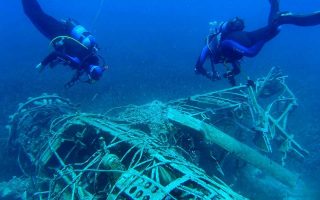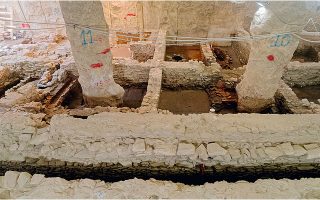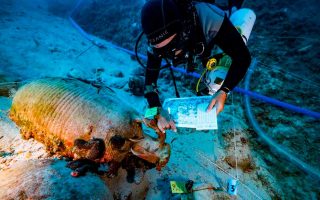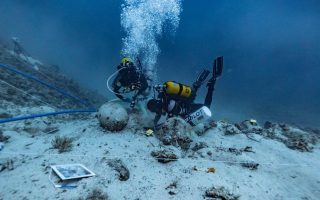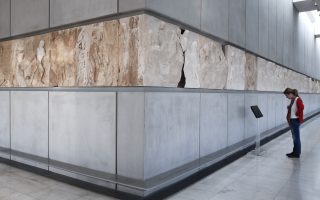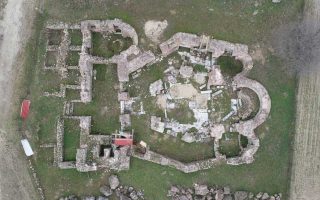Unexpected archaeological discoveries in Halkidiki
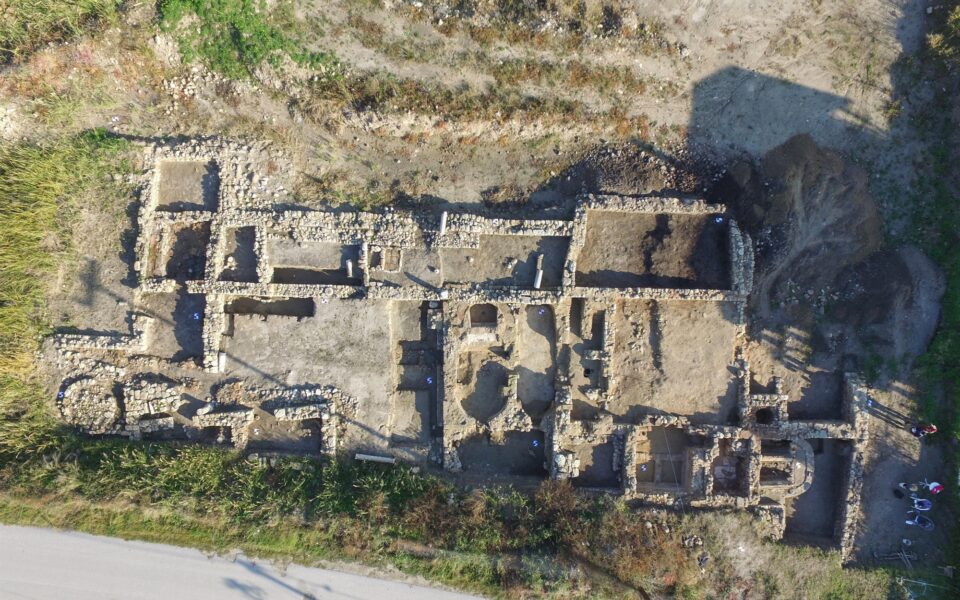
Retiree Anagnostis Anestidis was taking his dog for a walk, as he did every morning, on the beach of Fourka. It was the day after a severe storm had hit Kassandra, the westernmost peninsula of Halkidiki in northeast Greece. The sea had calmed down, but the huge waves of the previous night had left scenes of devastation on land.
Walking along the coast, Mr. Anestidis, barely a few meters from his house, saw a statue lying among the stones, wood, branches, sand and soil. He attempted to remove it from its muddy position, but it was too heavy. He then tied it with a rope, dragged it to his house and without a second thought called the Ephorate of Antiquities of Halkidiki and Mount Athos.
“I have found a female statue,” he said, judging by its hair. As archaeologists later discovered, the statue was part of a marble archaic kouros (a free-standing statue, usually of a nude male). It is moderately well preserved, smaller in size than the usual examples, but, as ancient kouroi are rare in Macedonia, it is considered an exceptional find.
The kouros has not been the only unexpected find in this corner of Greece. Extreme weather events in Fourka in the autumn of 2020 and 2021 brought to the surface the ruins of an ancient pottery workshop, similar to the furnace of the archaic, classical and Hellenistic periods found in neighboring Mendi. The removal of sand during the storms revealed the upper part of the kiln and a number of ceramic jars, including fragments of Hellenistic commercial amphorae of the so-called “Parmeniskou group,” which was distributed around the wider area of ancient Moroni.
An image of the kiln adorns the poster of the 34th meeting (online again this year) for archaeology in Macedonia and Thrace (March 10-11), which will present, in addition to the findings of Fourka, the rich crop of movable and immovable finds that were saved from the various residential development projects on the Kassandra peninsula. Rescue excavations at hotel construction sites, on seaside private plots and next to modern settlements revealed antiquities in Athytos, Kallithea, Kriopigi, Polychrono, Paliouri, and Sani, confirming that the area of Halkorikos has an unbroken history from ancient to modern times.
The findings come from both well-known ancient towns and villages and newly-revealed places on the peninsula. Among them is ancient Afitis. Founded by Eretrian settlers during the period of Greek colonization (from the middle of the 8th to the middle of the 7th century BC), Afitis flourished until the Roman occupation and remained in the same place until today. Excavations on privately owned plots in Athytos, in the center of the modern settlement, revealed the remains of a building and part of a cobbled street (5th century BC), while to the west were excavated tombs (5th to first half of the 4th century BC) from the ancient cemetery with rich grave goods (clay and bronze vessels, gold, silver and bronze jewellery, staves, figurines and children’s toys) in burials mainly of young people and children.
A seaside villa dating to late antiquity, with a peristyle courtyard and a bath, was also brought to light during excavations at two coastal plots in Polychronos, at the site of the cemetery of the ancient city of Aigi. The settlement probably belonged to a wealthy Roman citizen of Cassandria, a Roman colony in which land had been distributed to veteran soldiers.
The removal and relocation of part of a building from a Hellenistic agricultural complex, revealed by the construction works for a hotel unit in Xyna in Kanistro Paliouri, was carried out by the local archaeological services. The ancient building is now maintained in another location within the hotel facilities.
Antiquities were also discovered at excavations in Kallithea, where the famous sanctuary of Zeus Ammon is located. In Mikri Kypsa, south of Sani, scattered residential remains of the late Roman and Early Christian periods were found in an area of nine acres, while in the settlement of Kriopigi archaeologists found 13 tombs of a hitherto unknown cemetery of the 4th century AD, containing coins, unpainted vases and bronze jewellery.
